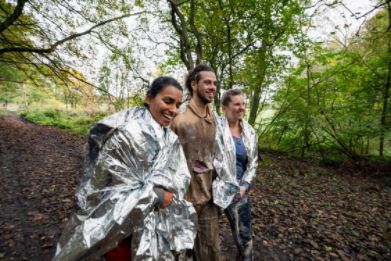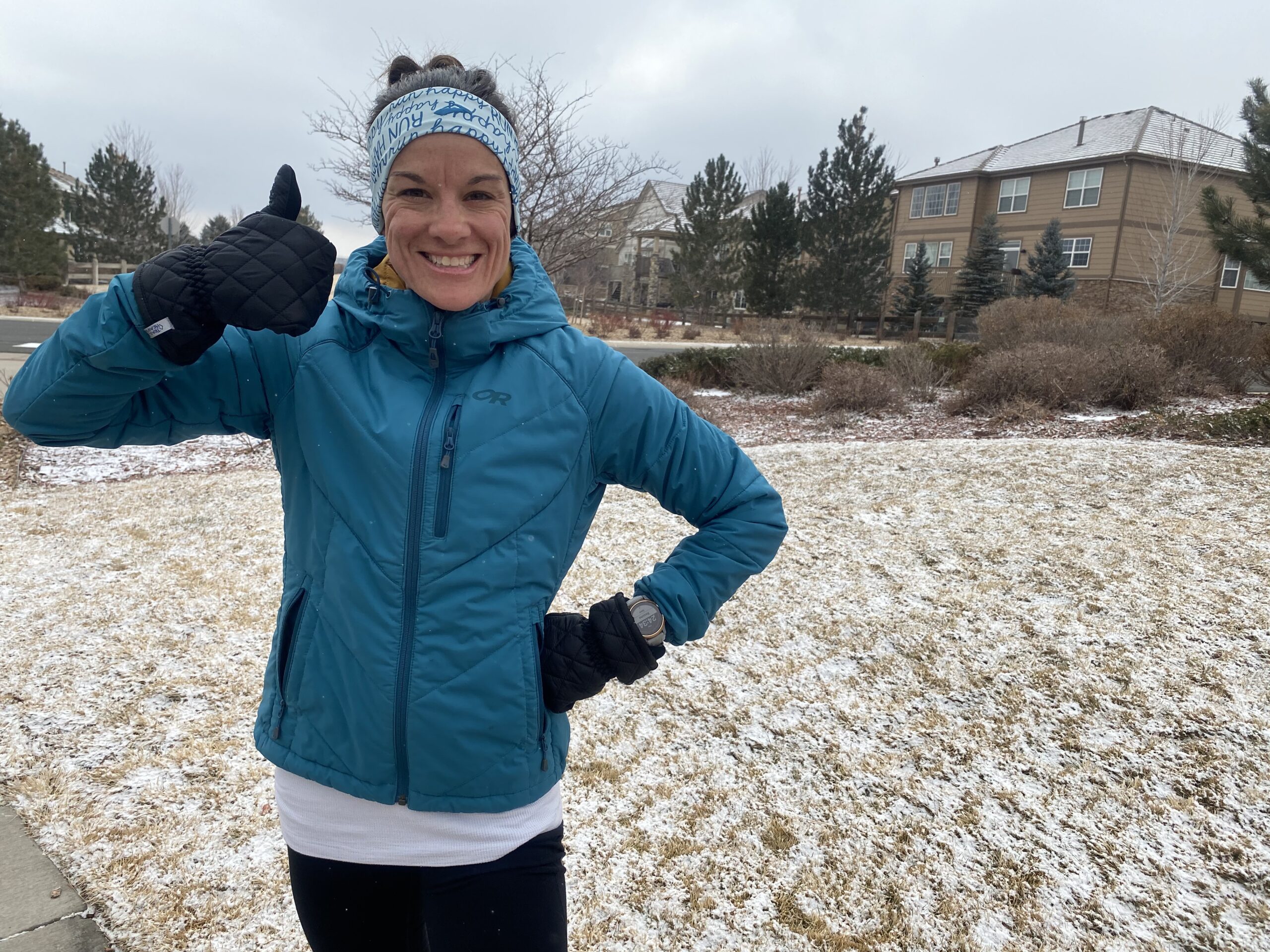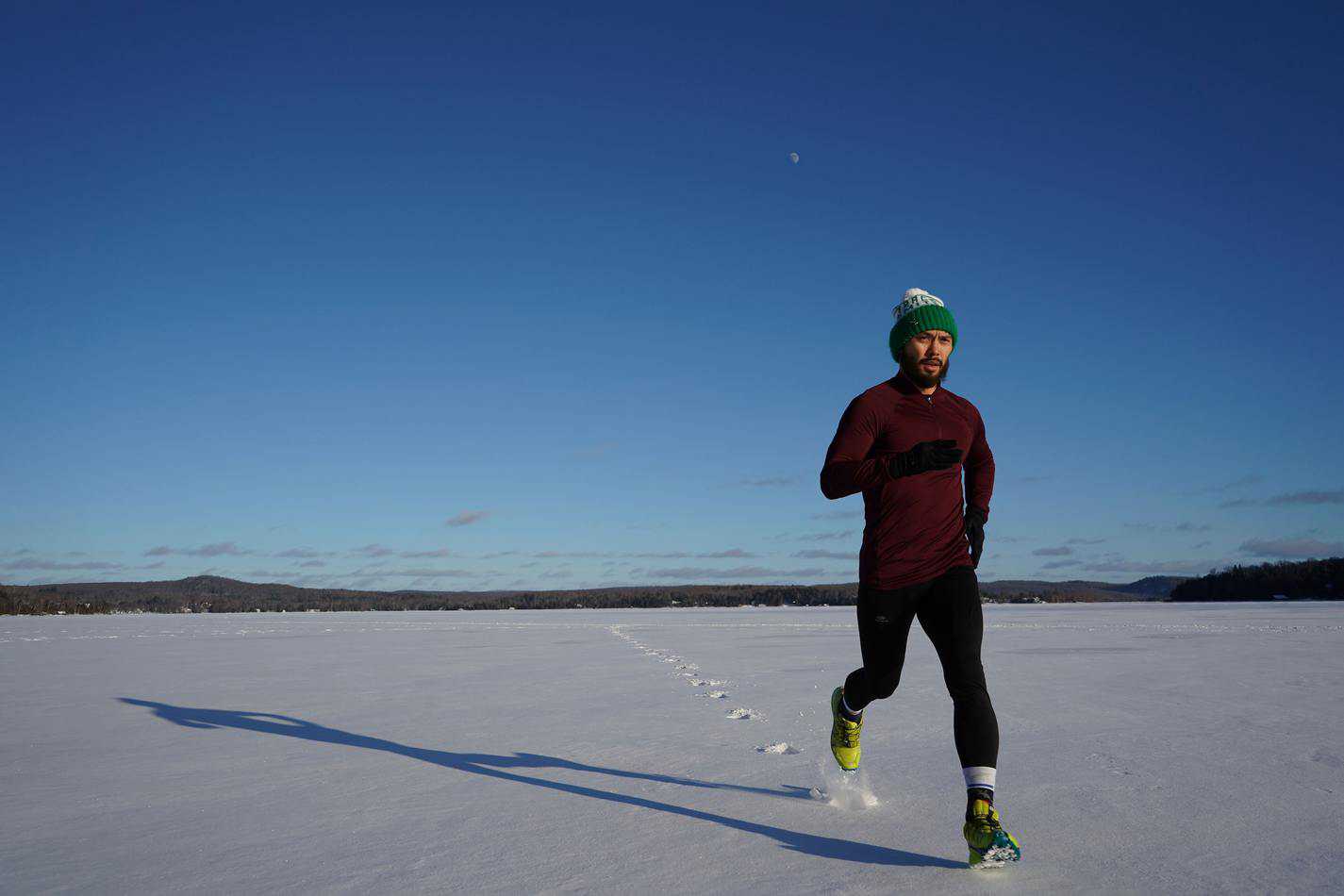If you’ve watched a marathon, you may have noticed that all the runners wrap themselves in a foil sheet after they cross the finish line. It looks a bit weird, and you might think it’s just for advertisements. However, foil blankets serve an important purpose once runners have finished the marathon.
Marathon runners wear foil blankets after running to keep themselves warm and avoid post-race chills. After a race, their body temperature starts dropping off quickly, and they run the risk of becoming hypothermic. Wrapping a reflective blanket helps maintain body temperature and avoid shivering.
You might be surprised to find out that foil blankets were actually created by NASA for their space stations. Read on to learn the story behind space blankets, how they work to keep us warm, and how to avoid post-race chills if you don’t have one.
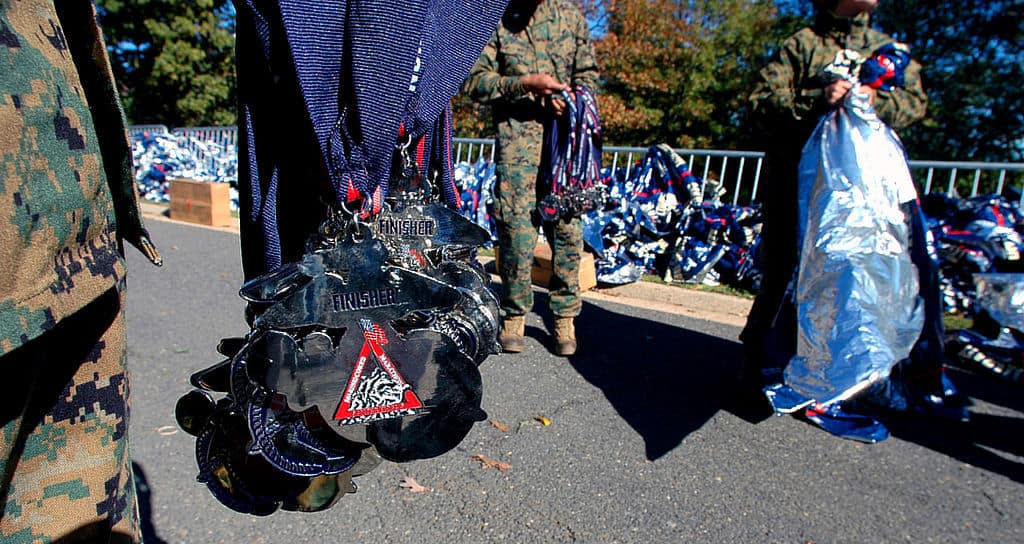
U.S. Navy photo by Mass Communication Specialist 2nd Class Timothy Anderson: Wikimedia Commons Public domain
Why Marathon Runners Wrap Up in Foil Blankets After a Race
The foil blankets you see wrapped around marathon runners are technically called space blankets. They are also known as thermal blankets, heat sheets, emergency blankets, solar blankets, and mylar blankets.
The name ‘foil blankets’ may suggest that they are made of the usual aluminum foil you buy at the grocery store, but that’s not the case. These foils are manufactured by coating vaporized aluminum on a thin plastic film. In any case, call them what you want as it’s not really the name that matters.
What does matter is how they keep runners warm after running 26.2 miles. So how does it work?
When you keep running for a long time, your body adapts to burning energy by different means—sweating in particular—to keep itself cool. It takes time for your body to adapt to running, and similarly, it takes time for it to readapt to normal functioning. So when you suddenly stop after running for a few hours (running a marathon takes anywhere from 2 – 6 hours as we write about here), your internal senses tell your body to keep losing heat.
Now, if it’s warm outside when you finish your race this isn’t generally a problem.
On a cold day however, if you were to do nothing at that time, your body temperature would keep dropping, and you could become hypothermic. Though rare, on a rainy day such was the 2015 Boston Marathon, it’s something runners need to be careful about.
But wrapping yourself up in mylar blankets helps maintain body temperature. It also blocks some of the wind, but its primary task is to help you stay warm by reflecting your body heat back in.
So unless you want to shiver your way around after a chilly marathon, you should wear a space blanket to maintain your body temperature.
How Space Blankets Work to Keep Runners Warm
Understanding why foil blankets were manufactured will help us learn how they keep our body warm. Space blankets were first used at NASA as part of the American Space Program (which explains the name ‘space blankets’). In 1973, the heat shield of the Skylab space station broke, and it started overheating. The temperature inside the space station went as high as 130° F (54° C).
NASA worried that the equipment and food inside it would decay if the situation persists. They contacted a company called National Metallizing for assistance. This company used to coat toys with a thin layer of metal and manufactured tinsel for Christmas decorations. However, the two companies worked together to create a reflective metallic sheet that can reflect up to 97% of the heat falling on it.
A space crew wrapped the whole spacecraft in a space blanket. The idea worked, and the space station maintained its temperature because the blanket deflected the sun’s heat.
Now, as we’ve discussed, our bodies keep shedding heat after we’ve crossed the finished line and stopped running. This is where mylar blankets can help us because they not only keep heat out but also work to keep heat in. They trap up to most of your body heat that would typically have evaporated into the environment. I can definitely attest to this! When I crossed the finish line of a wet and rainy Twin Cities Marathon in 2017 I was so thankful to have that foil blanket wrapped around me while I impatiently waited for my hubby to cross the finish line, too.
I loved running in that drizzle, but not sitting in it in wet clothes! Space blankets kept all of us warm that day by allowing our body heat to stay in.
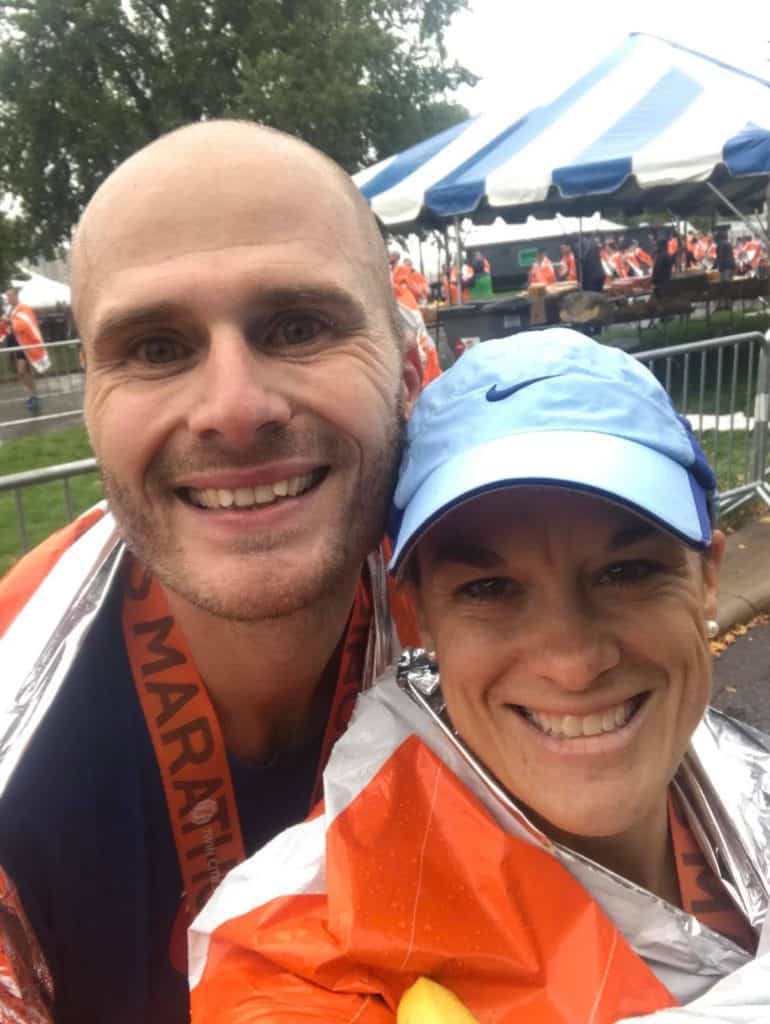
They are not only suitable for avoiding post-race shivering, but they can also be used before the race to retain warmth.
The flip side is if you have a race where the finish may be warm, but you’re standing around freezing during a dawn start, a foil blanket is an inexpensive way to stay warm and then you won’t feel guilty about tossing it when the gun goes off.
Are Space Blankets Safe to Use on Hot Days?
Unlike basketball or football, marathons have no season. Usually, though, marathons are scheduled in mild weather—after the winters but before the heat sets in or after the hot summer, but before cold winds start blowing. This is considered the perfect weather for running. We’ve seen how foil blankets maintain body temperature in such conditions.
But what if they were used on a hot day of summer after a marathon or even a warm fall day? Can space blankets be dangerous since they keep the body warm? Does it increase the risk of heatstroke?
Researchers from Indiana State University asked the same questions and conducted a study. They published their findings in the International Journal of Exercise Science. The research included 19 young, healthy runners who ran five miles on a treadmill at 86° F (30° C). They concluded that foil blankets do not increase the risk of overheating if used in a hot environment.
However, they also found that space blankets did not influence the cooling rate at all. This suggests that you don’t need these blankets after a race in a hot, humid environment.
Really, you just don’t need them if it’s warm out when you cross the finish line. Feel cold? Use one. But if you don’t, there really is no need.
Do All Marathon Races Hand Out Foil Blankets?
While space blankets are an excellent and great way to avoid post-race shivering, unfortunately, they’re not offered at all marathon races. Many finish lines where the temperatures will be cooler will provide you with a foil blanket to make things easier, but not all of them.
In my experience, the larger races tend to have them. Like Twin Cities and Portland, two of which I’ve experienced. REVEL marathons, which you can learn more about this great race series here, hand out mylar blankets at the start of the races. You could either choose to wrap yourself in this at the start to stay warm or you could put it in your bag that will be at the bag drop waiting for you at the finish line.
Many races don’t have them because it’s just too warm and you won’t need it. And f it’s a small race, it may just not be in the race budget, as those marathons often tend to cost less as I wrote about in “The Expense of Marathons (and How to Make Them Cheaper).”
So how do you know if your race will provide foil blankets?
If you know it’s going to be a chilly or rainy finish line, I’d suggest checking with your race to find out if they’ll have mylar blankets at the finish. If not, buying a heat sheet for yourself to use when you finish your race could be a great idea. You’ll be thanking yourself for this foresight later!
Mylar blankets are cheap and widely available – you can get an inexpensive 4-pack on Amazon so you’ll be set for future finish lines! They are also very lightweight, which means you won’t have problems carrying one in your bag to your next marathon. Or when you’re handed out a space blanket in a race, you can simply stash it in your trunk or at home for use when you need it. I still have my Twin Cities one stashed in my closet so as they’re completely reusable.
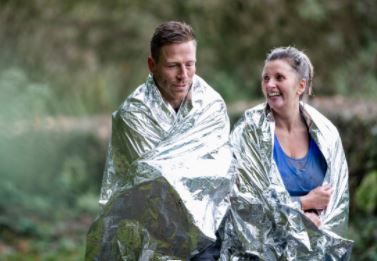
Other Ways to Avoid Post-Race Shivers if You Don’t Have a Foil Blanket
Post-race shivers are annoying and sometimes even terrifying. You may not be able to get your body temperature back to normal for hours, especially if you have a low body mass index (BMI). The goosebumps and teeth-chattering cold really stinks when you’d rather be enjoying those finish line feels.
It’s essential to prepare yourself to avoid post-race chills. One of the best things you can do is wear a foil blanket. As we’ve discussed, they work very well to maintain your body temperature until it readjusts itself to normal functioning.
However, if you don’t have a space blanket, you can still do a few things to alleviate these symptoms.
- Bring a warm pair of clothes for your race. As soon as you cross the finish line, change into those dry, warm clothes. Wet clothing only worsens your shivers, so adjust your outfit as quickly as possible. Switching your clothes also includes changing your socks and shoes.
- Another thing you can do is hydrate your body and have some food. You don’t have to stuff yourself; a banana, bagel and an electrolyte drink (something the body can quickly metabolize) will do the job.
- Take a warm shower or bath when you get home to help regulate your body temperature. I definitely prefer the bath as that is a great way to jumpstart recovery for sore muscles, too.
If you’ll be traveling to your marathon, try to get a hotel close to the finish line if possible. Though space blankets and these other remedies help keep you warm after your body temperature starts to plummet after a marathon, there is just nothing better than getting back in your room for a warm bath, dry clothes and snuggling under the covers.
RELATED: Is heat or ice better for long run recovery?
Final Thoughts
If you just walk around in wet clothes after a race, you run the risk of hypothermia, which can be dangerous. This is not a problem on hot days, but you’ll need to be prepared with something to avoid shivering after running in all other seasons.
Space blankets are a cheap and lightweight solution to post-race chills. They trap the heat radiated by our bodies and maintain its temperature. Hopefully one will be handed out to you once you cross the finish line in a marathon, so that you can make use of it until your body calms down and stabilizes its temperature.
